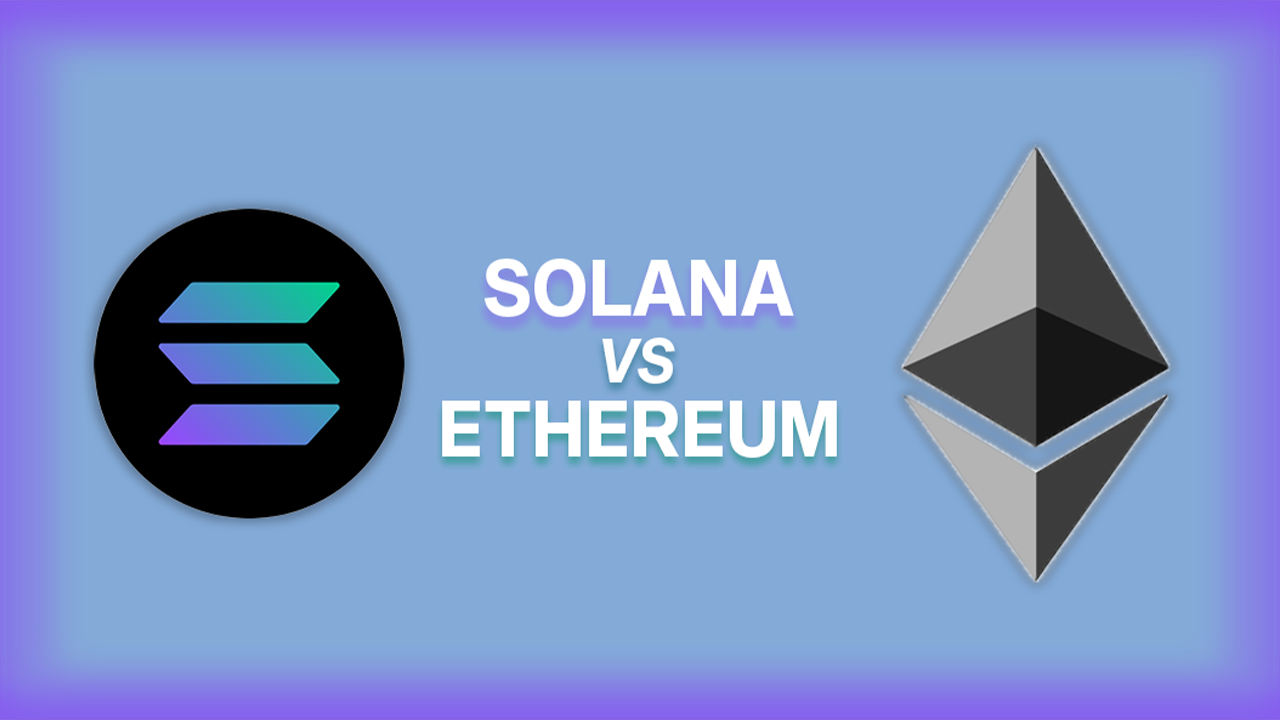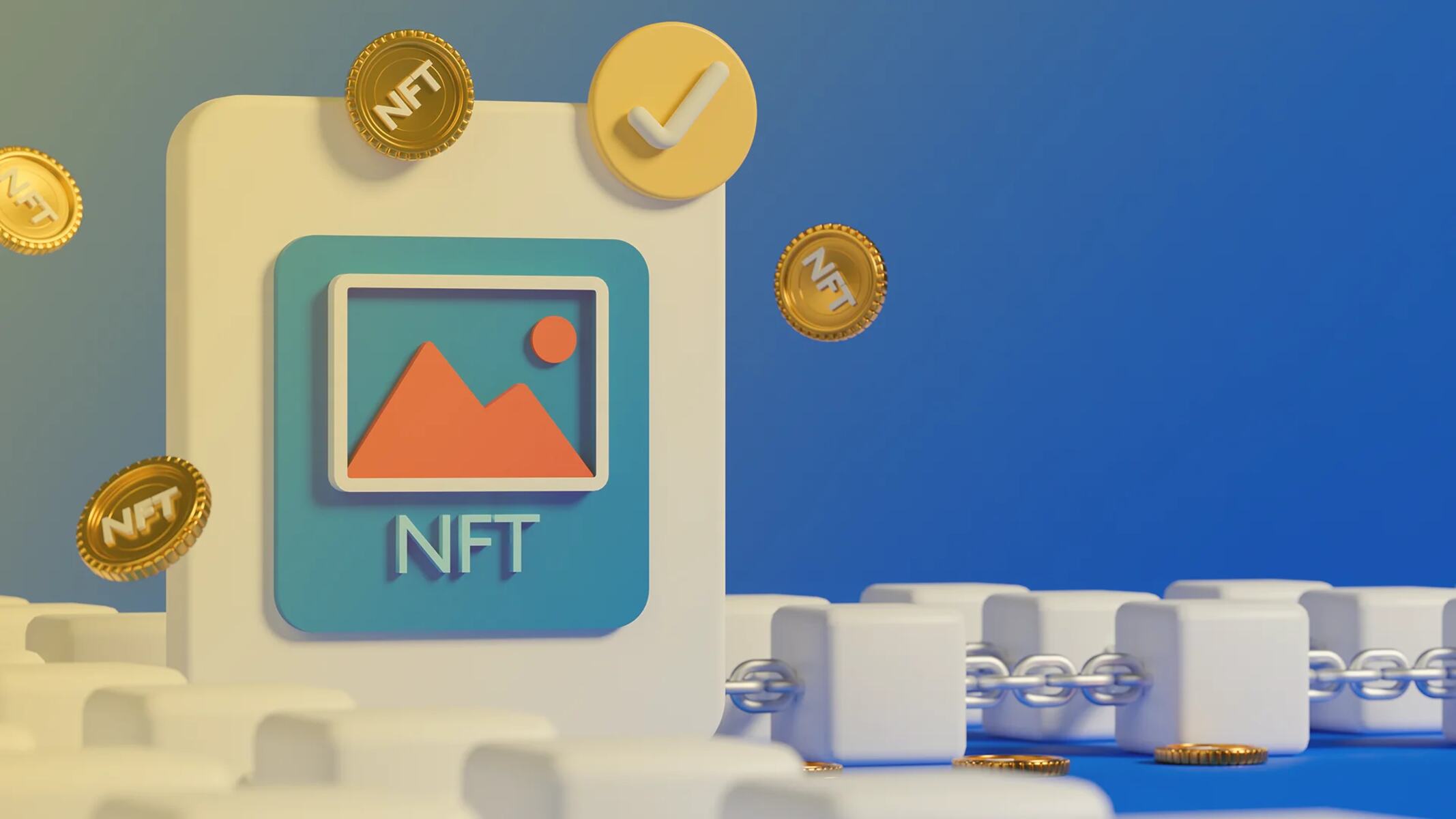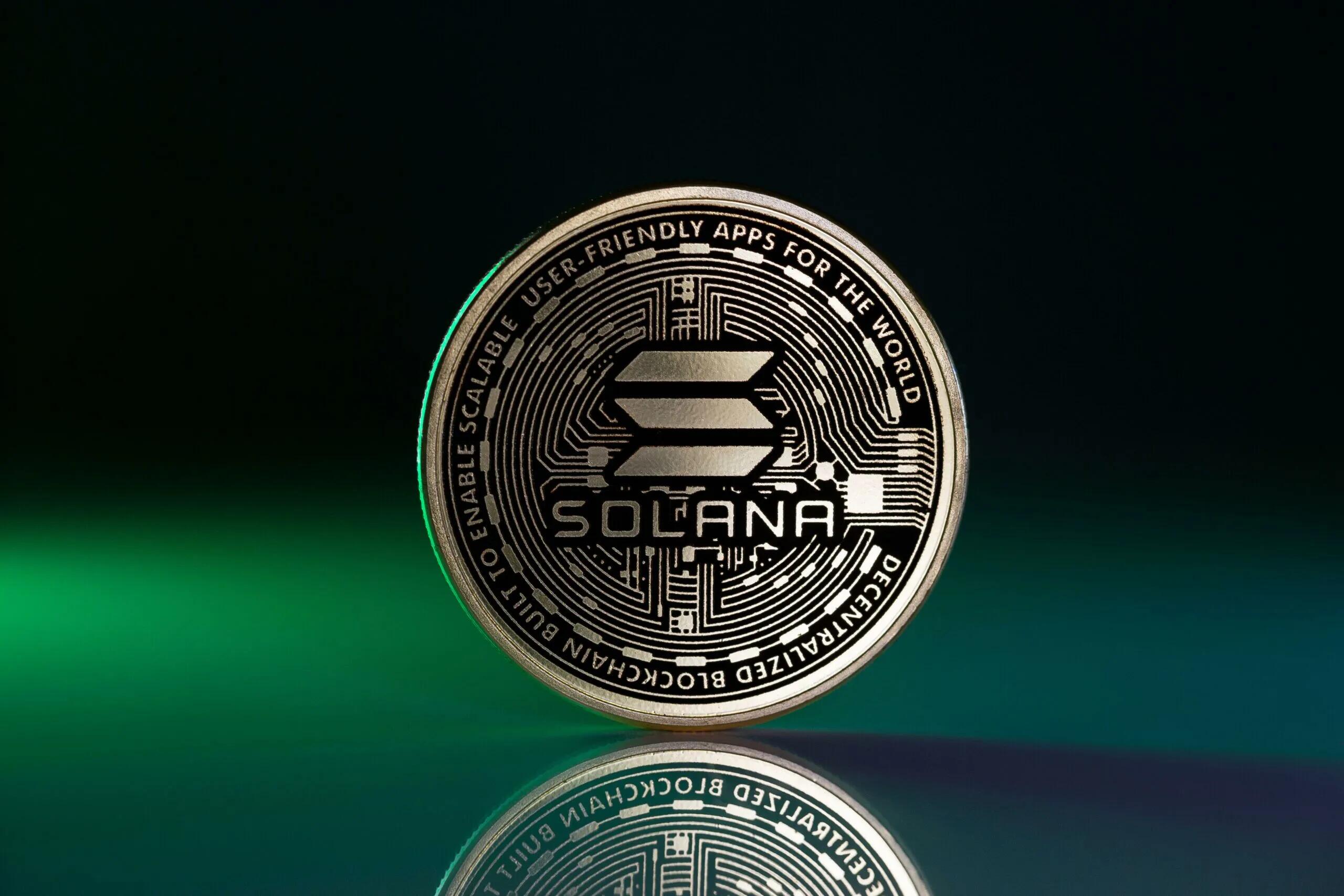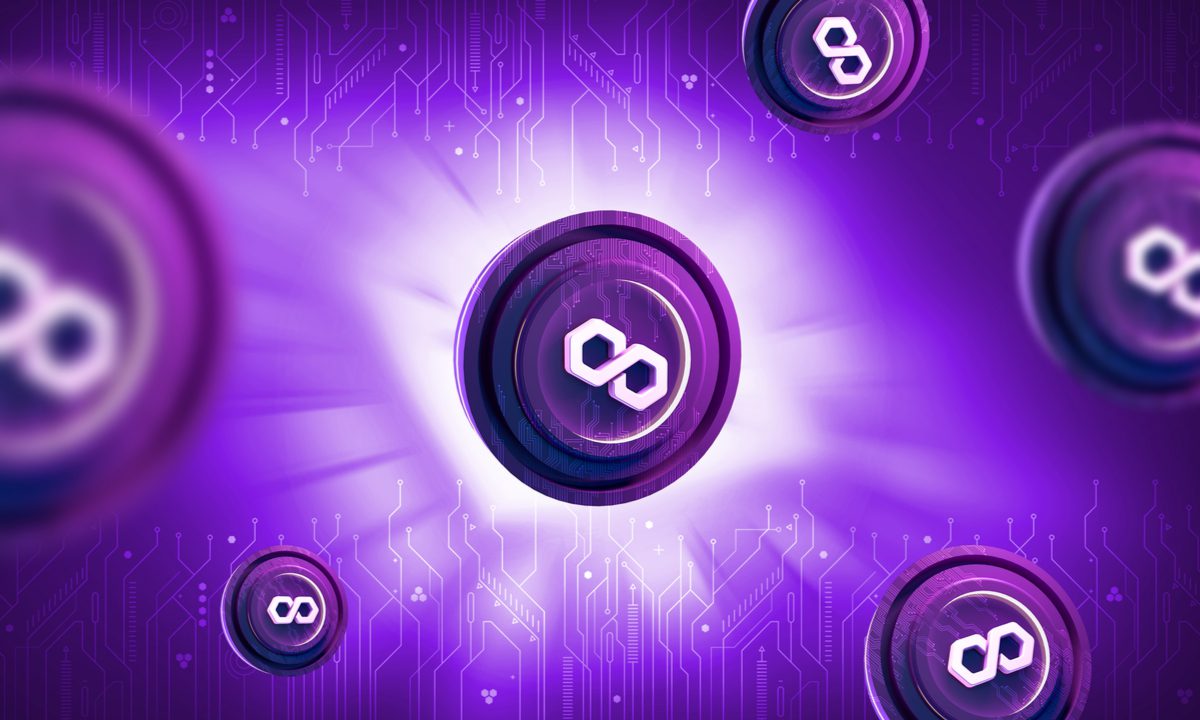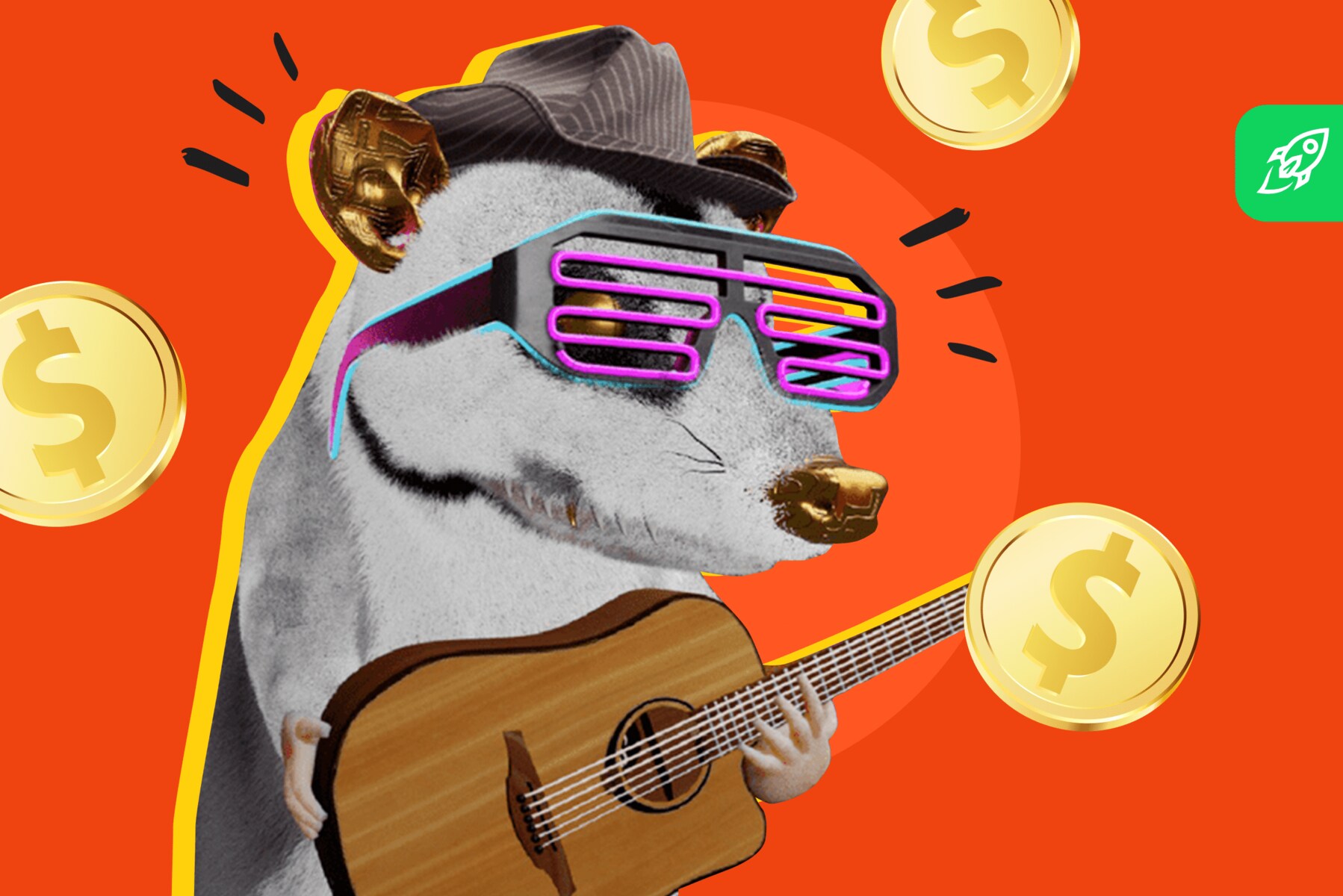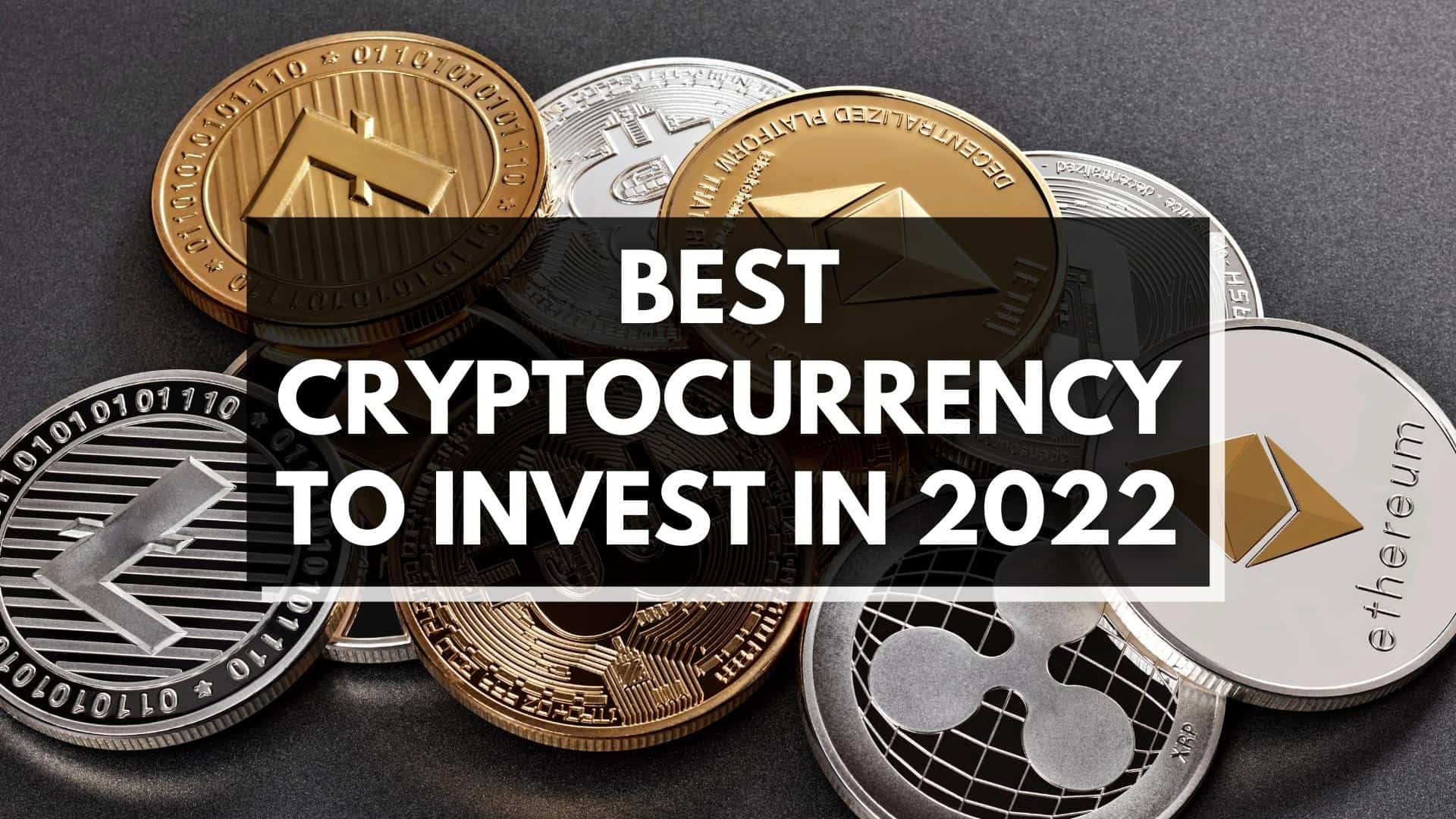Introduction
Welcome to the world of NFTs on Solana, where digital creativity meets blockchain technology. If you’re an artist, collector, or simply interested in the emerging world of non-fungible tokens (NFTs), you’ve come to the right place. In this guide, we will walk you through the process of minting an NFT on the Solana blockchain, from setting up a wallet to listing and selling your creations on a Solana NFT marketplace.
Solana is a high-performance blockchain platform designed for decentralized applications (dApps) and smart contracts. It boasts lightning-fast transaction speeds and low fees, making it an attractive choice for NFT enthusiasts. With Solana’s scalability and innovative architecture, artists and creators can showcase their digital artwork or unique collectibles in a secure and transparent manner.
But what exactly is an NFT? NFT stands for non-fungible token, which means it is a unique digital asset that cannot be exchanged on a one-to-one basis like cryptocurrencies. Unlike Bitcoin or Ethereum, which are fungible tokens, NFTs represent ownership of a specific item, such as artwork, music, videos, virtual real estate, or even virtual pets. Each NFT has its own distinct value and characteristics, making it one of a kind.
Now you might be wondering, why should you mint NFTs on Solana? Well, besides its fast transaction speeds and low fees, Solana offers a growing ecosystem of NFT marketplaces and platforms that cater specifically to Solana-based NFTs. By minting your NFTs on Solana, you can tap into a vibrant community of collectors and buyers who are actively seeking unique digital assets.
Choosing the right Solana NFT marketplace is essential for showcasing and selling your NFTs. Each marketplace may have its own features, user base, and fees. It’s important to do your research and find the marketplace that aligns with your goals and target audience. We will delve deeper into this topic later in the guide, so stay tuned!
Before you start minting your NFTs, you’ll need to set up a Solana wallet. A Solana wallet is a digital wallet that allows you to securely store and manage your Solana-based assets, including your NFTs. We will guide you through the process of setting up a wallet and connecting it to the NFT marketplace of your choice.
Once your wallet is set up, it’s time to unleash your creativity and start creating artwork or collectibles for your NFTs. Whether you’re a digital artist, graphic designer, musician, or any other creative individual, Solana provides a platform for you to showcase your talent and monetize your digital creations.
Now that you have your artwork or collectibles ready, it’s crucial to properly set up the metadata and royalties for your NFTs. Metadata includes information about your NFTs, such as title, description, image URL, and attributes. Additionally, setting up royalties ensures that you receive a percentage of the proceeds each time your NFT is sold or traded in the secondary market.
Once you have everything prepared, it’s time to connect your Solana wallet to the NFT marketplace of your choice. This process enables you to interact with the marketplace, list your NFTs, and engage with potential buyers. We’ll guide you through the steps of connecting your wallet and navigating the marketplace interface.
Finally, it’s time to mint your NFT on Solana! Minting an NFT involves permanently recording your digital asset on the blockchain, giving it a unique identity and confirming your ownership. We will walk you through the minting process, ensuring that your NFT is successfully created and ready to be listed.
Listing and selling your NFT on Solana is the next step in the journey. By making your NFT available for purchase, you open the door to potential buyers and collectors. We will cover the process of listing your NFT on the Solana NFT marketplace and provide tips on how to attract attention and maximize your chances of a successful sale.
After your NFT is minted and listed, it’s important to manage your NFTs effectively. This includes tracking sales, monitoring the secondary market, and engaging with buyers and collectors. We will provide insights on how to manage your NFT portfolio and stay connected with the Solana NFT community.
So, are you ready to mint an NFT on Solana? Let’s dive into the exciting world of NFTs and explore the opportunities that await you in this rapidly growing space.
What is Solana?
Solana is a high-performance blockchain platform that aims to revolutionize decentralized applications (dApps) and smart contracts. Launched in 2020 by the Solana Foundation, it offers fast transaction speeds, low fees, and high scalability, making it an attractive choice for developers, businesses, and artists.
One of Solana’s key strengths lies in its unique architecture. It utilizes a combination of technologies such as Proof of History (PoH), Tower BFT (a variant of the Practical Byzantine Fault Tolerance consensus algorithm), and Gulf Stream to achieve fast confirmation times and high throughput. With a theoretical capacity of over 65,000 transactions per second, Solana provides one of the fastest blockchain networks in the industry.
By leveraging its fast and efficient infrastructure, Solana aims to support the next wave of decentralized applications, enabling developers to create complex and high-performance dApps with seamless user experiences. Solana’s low fees make it economically viable for users to interact with dApps, ensuring that the network remains accessible and inclusive.
In addition to its technical capabilities, Solana boasts a vibrant ecosystem of projects and communities. The Solana Foundation actively supports the growth of the ecosystem by providing grants, technical assistance, and community outreach programs. This support has led to the development of various decentralized finance (DeFi) protocols, NFT marketplaces, gaming platforms, and more, all built on the Solana blockchain.
Furthermore, Solana’s compatibility with the Ethereum Virtual Machine (EVM) allows developers to port their existing Ethereum dApps to Solana with ease. This interoperability opens up opportunities for collaboration between the Ethereum and Solana communities, propelling innovation and expanding the reach of both platforms.
It’s worth noting that Solana’s architecture and design choices prioritize performance and scalability, which might result in a higher degree of centralization compared to other blockchain platforms. However, the Solana Foundation and the community are actively working towards decentralization and ensuring a robust and secure network.
With its impressive transaction speeds, low fees, and commitment to fostering innovation, Solana has gained significant attention in the blockchain space. It has attracted a growing number of projects, developers, and investors who recognize its potential to drive the adoption of blockchain technology in various industries.
So, whether you’re an entrepreneur looking to build a dApp, an artist exploring the NFT space, or simply interested in the advancements of blockchain technology, Solana provides a powerful and exciting platform to explore and unleash your creativity.
What is an NFT?
An NFT, or non-fungible token, is a unique digital asset that is stored and verified on a blockchain. Unlike traditional cryptocurrencies like Bitcoin or Ethereum, which are interchangeable and hold the same value, NFTs represent ownership of a specific item or piece of content, making them one-of-a-kind.
Each NFT has its own unique set of data that distinguishes it from other tokens. This data can include information such as the name of the item, a description, the creator’s information, and a link to the digital asset itself, whether it’s a piece of artwork, a video, music, virtual real estate, or even virtual pets. This provable scarcity makes NFTs desirable among collectors and enthusiasts.
The ownership and transaction history of an NFT are recorded on a blockchain, providing a transparent and immutable record of its provenance. This gives artists, creators, and collectors the ability to prove the authenticity, rarity, and ownership of their digital assets in a way that was previously not possible in the digital realm.
One of the key features of NFTs is that they can be bought, sold, and traded on various online marketplaces. When someone purchases or sells an NFT, the transaction is often conducted using cryptocurrency. The ownership of the NFT is then transferred from the seller to the buyer, and the transaction is recorded on the blockchain.
It’s important to note that owning an NFT does not necessarily mean owning the copyright or intellectual property rights associated with the underlying digital asset. It only signifies ownership of a specific instance or representation of that asset. The creator of the NFT may still hold the copyright and other rights unless specifically transferred or licensed.
The popularity of NFTs has grown rapidly in recent years, attracting artists, musicians, athletes, and even celebrities to explore this new frontier of digital ownership and monetization. NFTs have provided creators with a new way to exhibit and sell their work directly to their fans and supporters, bypassing traditional gatekeepers and intermediaries.
The concept of NFTs has also sparked conversations around the potential for innovation in various industries. For example, NFTs have been utilized in gaming to represent in-game assets, giving players true ownership and the ability to trade or sell their virtual possessions. In the real estate industry, NFTs have been used to tokenize properties, providing fractional ownership and enhanced liquidity.
While the NFT market is still relatively new and evolving, it has undoubtedly opened up exciting opportunities for artists, collectors, and creators. Whether you’re interested in collecting digital art, showcasing your own creations, or exploring the limitless possibilities of digital ownership, NFTs offer a gateway into a new era of digital assets and creativity.
Why Mint NFTs on Solana?
Minting NFTs on Solana offers a range of advantages that make it an attractive choice for artists, collectors, and creators. Here are several reasons why you should consider minting your NFTs on the Solana blockchain:
Fast Transaction Speeds: Solana’s high-performance blockchain architecture enables lightning-fast transaction speeds. With confirmation times as low as 400 milliseconds, Solana ensures that minting and trading NFTs happen almost instantaneously. This ensures a seamless and efficient user experience for both creators and collectors.
Low Transaction Fees: In comparison to other blockchain platforms, Solana boasts extremely low transaction fees. Its efficient consensus mechanism and innovative design allow for cost-effective minting and trading of NFTs. This makes it economically viable for creators and collectors of all sizes to participate in the Solana NFT ecosystem.
Scalability: Solana’s unique architecture is specifically designed for scalability, allowing it to handle a high volume of transactions simultaneously. This scalability is particularly beneficial in the context of NFTs, as the popularity and demand for digital assets continue to soar. By minting NFTs on Solana, you can be confident that your creations will have the necessary infrastructure to meet the demands of a growing market.
Robust Ecosystem: Solana has fostered a thriving and diverse ecosystem of projects and communities. The Solana Foundation actively supports the development and growth of the ecosystem, providing grants, technical assistance, and community programs. This ecosystem offers a wide range of opportunities for creators and collectors, from NFT marketplaces to gaming platforms. By minting your NFTs on Solana, you can tap into this vibrant community and connect with a broader audience.
Interoperability with Ethereum: Solana has built-in compatibility with the Ethereum Virtual Machine (EVM), allowing developers to easily port their existing Ethereum dApps and contracts to Solana. This interoperability enables collaboration between the two ecosystems, expanding the reach of your NFTs and contributing to a broader network effect. It also provides a seamless transition for artists, collectors, and creators already established in the Ethereum NFT space.
Community and Market Opportunity: Solana has a passionate and rapidly growing community of enthusiasts, supporters, and investors. By minting your NFTs on Solana, you gain access to this engaged community, opening up avenues for exposure, collaboration, and potential sales. The market for Solana-based NFTs is continually expanding, attracting both seasoned collectors and newcomers to the space.
Security and Transparency: Solana’s blockchain technology provides a secure and transparent environment for minting and trading NFTs. The immutability of the blockchain ensures the integrity and authenticity of your digital assets, offering peace of mind to both creators and collectors. The transparent nature of the blockchain also allows for easy verification and provenance of NFT ownership, making it a trusted platform for digital asset transactions.
In summary, minting NFTs on Solana provides numerous benefits, including fast transaction speeds, low fees, scalability, access to a robust ecosystem, interoperability, a vibrant community, and strong security and transparency. These factors combine to create an ideal environment for artists, collectors, and creators to showcase their work and participate in the exciting world of NFTs.
Choosing a Solana NFT Marketplace
When it comes to minting and selling your NFTs on Solana, choosing the right marketplace is crucial. With a growing number of Solana NFT marketplaces available, it’s essential to consider several factors before making your decision. Here are key considerations to keep in mind:
User Base: The size and engagement of a marketplace’s user base can greatly impact the visibility and reach of your NFTs. Look for platforms that have a large and active community of collectors, buyers, and enthusiasts. A vibrant user base increases the chances of your NFTs being discovered and purchased by potential buyers.
Marketplace Features: Different marketplaces offer varying features and functionalities to enhance the buying and selling experience. Consider the ease of listing and managing your NFTs, the ability to promote and market your creations, and the availability of analytical tools to track sales and monitor your portfolio. Look for features that align with your specific needs and goals.
Fees and Revenue Share: Evaluate the fee structure of each marketplace, including listing fees, transaction fees, and any additional charges. Some platforms may also have a revenue share model, where a percentage of your sales goes to the marketplace. Consider the overall cost and how it aligns with your budget and profit expectations.
Community Interaction: Look for marketplaces that encourage community engagement and interaction. Some platforms offer social features such as chat forums, comments sections, or dedicated community spaces. These features can help you connect with other artists, collectors, and enthusiasts, fostering collaboration and networking opportunities.
Curation and Quality Control: Consider the curation process of each marketplace. Some platforms have strict curation standards, ensuring a high level of quality and authenticity among the listed NFTs. Curation can enhance the marketplace’s reputation and attract serious collectors, increasing the chances of your NFTs being recognized and valued in the market.
Secondary Market Support: Take into account whether the marketplace supports the secondary market for NFT trading. The ability to resell your NFTs in the secondary market can be crucial in establishing long-term value and liquidity for your creations. Look for platforms that facilitate secure and transparent trading in the secondary market.
Platform Reputation: Research and assess the reputation and track record of each marketplace. Consider factors such as security, customer support, and any past incidents or controversies related to the platform. A reputable and trustworthy marketplace provides peace of mind and creates a positive environment for buying and selling NFTs.
Integrations and Partnerships: Explore the integrations and partnerships that a marketplace has established. Integration with popular wallets, blockchain tools, or other platforms can enhance the accessibility and visibility of your NFTs. Partnerships with prominent brands or influencers can also provide additional exposure and marketing opportunities.
By thoroughly evaluating these factors, you can make an informed decision about which Solana NFT marketplace best suits your needs and goals as an artist, collector, or creator. It’s essential to choose a marketplace that aligns with your artistic vision, target audience, and financial objectives, ensuring a successful and rewarding experience in the world of Solana NFTs.
Setting Up a Solana Wallet
Before you can mint, buy, or sell NFTs on Solana, you’ll need to set up a Solana wallet. A Solana wallet is a digital wallet that allows you to securely store, manage, and interact with your Solana-based assets, including your NFTs. Here’s a step-by-step guide to get you started:
Step 1: Choose a Wallet: Select a Solana wallet that best suits your needs. There are various options available, including browser extensions, mobile wallets, and hardware wallets. Popular choices include Sollet, Phantom, Solflare, and Solong, among others. Take into consideration factors such as security features, ease of use, and platform compatibility when making your decision.
Step 2: Create a Wallet: Once you’ve chosen a wallet, follow the instructions provided by the wallet provider to create your Solana wallet. This typically involves creating a unique username or seed phrase, which serves as the cryptographic key to access and authorize transactions in your wallet.
Step 3: Secure Your Wallet: It’s important to take measures to secure your Solana wallet. Safeguard your seed phrase by writing it down and storing it in a secure location offline. Enable additional security features offered by the wallet, such as two-factor authentication (2FA) or biometric authentication, if available. Be cautious of phishing attempts and only use official wallet websites or trusted sources to access your wallet.
Step 4: Fund Your Wallet: Once your wallet is created, you’ll need to fund it with SOL, the native cryptocurrency of the Solana blockchain. Obtain SOL from an exchange or transfer it from another wallet that supports Solana. Make sure to follow the specific wallet instructions for depositing SOL into your wallet address.
Step 5: Connect to the Solana Network: After you have funded your wallet, you’ll need to connect it to the Solana network. Depending on the wallet you’ve chosen, this may involve selecting the Solana network from a list of available networks or entering a specific node address. Consult the wallet’s documentation or user interface for instructions on how to connect to the Solana network.
Step 6: Backup Your Wallet: It’s crucial to regularly back up your Solana wallet to protect against accidental loss or device failure. Most wallets provide a backup option, allowing you to export and securely store a copy of your wallet information. Follow the wallet’s instructions to create a backup file and store it in a safe location, preferably offline or in a hardware wallet.
Step 7: Explore Wallet Features: Familiarize yourself with the features and capabilities of your chosen Solana wallet. These may include options to view your NFT holdings, interact with NFT marketplaces, send and receive SOL or other Solana-based assets, and manage your wallet settings. Understanding the functionality of your wallet will enable you to navigate the Solana ecosystem more effectively.
By following these steps, you can successfully set up a Solana wallet and gain access to the exciting world of Solana-based NFTs. Remember to keep your wallet secure, backup your wallet information, and stay informed about any wallet updates or security measures implemented by the wallet provider. With your wallet ready, you will be prepared to create, collect, and trade NFTs on the Solana blockchain.
Creating Artwork or Collectibles for your NFT
Creating artwork or collectibles for your NFTs is an exciting and creative process that allows you to showcase your talent and express your artistic vision. Whether you’re a digital artist, graphic designer, musician, or any other creative individual, Solana provides a platform to transform your ideas into unique digital assets. Here are some steps to consider when creating artwork or collectibles for your NFTs:
Define Your Concept: Start by brainstorming and clarifying your concept or theme for the NFT. Think about what inspires you and what you want to communicate through your digital creation. This could include exploring different art styles, experimenting with visual or audio elements, or conveying a specific message or emotion.
Create your Artwork or Collectible: Use your preferred creative tools and software to bring your concept to life. Whether you’re using digital drawing applications, 3D modeling software, music production software, or any other medium, emphasize quality and attention to detail in your creation. Experiment with different techniques and styles to make your artwork or collectible stand out.
Consider the Medium: Different mediums offer unique possibilities for NFTs. Traditional 2D art, 3D sculptures, animated artwork, music, virtual reality experiences, and interactive experiences are just a few examples. Consider how you can leverage the strengths of the medium you’ve chosen to create an engaging and memorable NFT.
Optimize Digital Assets: Prepare your digital assets for the NFT marketplace. This includes optimizing file formats, dimensions, and file sizes to ensure easy transfer and accessibility for buyers. For visual artwork, consider using file formats like JPEG or PNG, and for music or audio, use common formats like MP3 or WAV.
Metadata and Description: When minting your NFT, provide accurate and descriptive metadata that tells the story of your artwork or collectible. Include details such as the title, description, creation date, artist name, and any other relevant information. This metadata helps buyers understand the uniqueness and provenance of your NFT.
Showcase Unique Attributes: Consider adding unique attributes or characteristics to your NFT to make it special. This could include limited editions, different versions, unlockable content, or rarity traits. Offering these unique features can enhance the desirability and value of your NFT to collectors.
Engage with your Community: Share behind-the-scenes glimpses of your creative process, engage with your community, and involve them in the development of your NFTs. This can include sharing progress updates on social media, hosting virtual art exhibitions or live performances, or seeking feedback and input from your audience. Building a community around your NFTs can help create an engaged and supportive network of collectors.
Consider Collaborations: Collaborating with other artists or creators can add another layer of creativity and appeal to your NFTs. It can introduce fresh perspectives, expand your reach, and attract new audiences. Collaborations can take various forms, including joint projects, remixes, or cross-promotions.
Experiment and Iterate: Don’t be afraid to experiment and evolve your artistic style and direction. The NFT space offers a dynamic environment where innovation and exploration are highly valued. Embrace feedback, learn from your experiences, and continue to refine and improve your creations to resonate with your target audience.
Creating artwork or collectibles for your NFTs on Solana allows you to unleash your creativity and tap into a thriving digital art community. Whether you’re exploring new mediums, pushing artistic boundaries, or connecting with a global audience of collectors, the process of creating NFTs offers endless possibilities for expression and innovation.
Metadata and Royalties
When minting an NFT on Solana, paying attention to metadata and setting up royalties is crucial. Metadata provides essential information about your NFT, while royalties ensure that you are appropriately compensated for future resales or transfers. Here’s what you need to know:
Metadata: Metadata is the descriptive information attached to your NFT. It includes details such as the title, description, image URL, attributes, and external links related to your artwork or collectible. Providing accurate and comprehensive metadata enhances the understanding and value of your NFT. Consider including key information, such as the creation date, the inspiration behind your artwork, and any special features or editions.
Metadata also plays a role in discoverability. Choosing relevant keywords and tags can help potential buyers find your NFT when browsing or searching the marketplace. Take the time to optimize your metadata, as it can greatly influence the visibility and exposure of your NFT to collectors.
Royalties: Royalties enable you to earn a percentage of future sales or transfers of your NFT in the secondary market. When setting up royalties, you specify the percentage you wish to receive as the creator whenever your NFT is resold. The amount you choose can vary, but it is common for royalties to range between 5% and 20%.
Royalties are an essential aspect of NFT ownership as they provide ongoing recognition and compensation for artists and creators. It allows you to participate in the success of your work even after the initial sale. By establishing royalties, you ensure that as your NFT gains value and is traded in the secondary market, you receive a fair share of the profit.
It’s important to note that royalties are typically handled automatically by the marketplace or the underlying smart contract. The smart contract code enforces the royalty payment, ensuring that creators receive their designated percentage whenever a secondary sale occurs. This automatic enforcement simplifies the process and adds transparency to royalty distribution.
When setting up royalties, consider the balance between your desired earnings and the potential impact on the resale value of your NFT. While higher royalties may increase your immediate income, they can also affect the attractiveness of your NFT to buyers in the secondary market. Finding the right balance may involve experimentation and adjusting your royalty percentage based on market feedback and trends.
Furthermore, keeping track of royalty payments is easier on Solana due to the blockchain’s transparent nature. You can verify and audit all royalty transactions, ensuring fair compensation and accountability.
By paying attention to metadata and royalties, you enhance the discoverability, value, and ongoing compensation of your NFT. Accurate metadata allows collectors to understand and appreciate your artwork or collectible, while royalties ensure that your creative efforts are rewarded as your NFTs gain traction in the secondary market. Take the time to meticulously craft metadata and set appropriate royalties to maximize the potential of your NFTs on Solana.
Connecting Your Solana Wallet to the NFT Marketplace
Once you have set up your Solana wallet, the next step is to connect it to an NFT marketplace. Connecting your wallet allows you to interact with the marketplace, list your NFTs for sale, and engage with potential buyers. Here’s a step-by-step guide on how to connect your Solana wallet to an NFT marketplace:
Step 1: Choose an NFT Marketplace: Select an NFT marketplace that operates on the Solana blockchain. Consider factors such as the marketplace’s reputation, user base, fees, features, and overall compatibility with your goals as an NFT creator or collector. Popular Solana NFT marketplaces include SolSea, Magic Eden, Solanart, and Digital Eyes.
Step 2: Create an Account: Sign up or create an account on the chosen NFT marketplace. Provide the necessary information, such as your email address and username. Some marketplaces may also require additional verification steps to ensure security and compliance.
Step 3: Navigate to the Wallet Settings: In the settings or profile section of the NFT marketplace, locate the wallet settings or wallet connection options. This is where you will be able to connect your Solana wallet to the marketplace.
Step 4: Wallet Connection: Follow the instructions provided by the marketplace to connect your Solana wallet. This typically involves selecting the appropriate wallet provider, such as Sollet or Phantom, and approving the connection request.
Step 5: Wallet Authorization: Depending on the wallet provider and the marketplace, you may need to authorize the connection by signing a transaction using your Solana wallet. This ensures that you, as the wallet owner, have control over your wallet’s interaction with the marketplace.
Step 6: Access Granted: Once the connection is successfully established, you should see a confirmation in your wallet or on the marketplace indicating that your Solana wallet is connected. At this point, you can start exploring the marketplace, uploading your NFTs, and engaging with the community.
Step 7: Review Marketplace Features: Familiarize yourself with the features and functionalities offered by the marketplace. Each marketplace may have its own listing process, promotion options, and community engagement tools. Take the time to understand how to navigate the interface, manage your listings, and make the most of the marketplace’s features.
When connecting your Solana wallet to an NFT marketplace, it’s important to prioritize security. Ensure that you are using the official website or app of the marketplace and avoid sharing your wallet seed phrase or private keys with anyone. By following best practices and using trusted platforms, you can protect your digital assets and enjoy a safe and secure NFT trading experience.
Connecting your Solana wallet to an NFT marketplace opens up the doors to showcase and sell your NFTs to a wider audience. It allows you to tap into the vibrant Solana NFT community and connect with potential buyers who are actively seeking unique digital assets. Take the time to explore different marketplaces, find the one that aligns with your artistic vision and goals, and start leveraging the power of Solana to showcase and monetize your NFT creations.
Minting Your NFT on Solana
After you have connected your Solana wallet to the desired NFT marketplace, it’s time to mint your NFT and permanently record it on the Solana blockchain. Minting is the process of creating a unique digital token that represents your artwork or collectible. Here’s a step-by-step guide on how to mint your NFT on Solana:
Step 1: Prepare your Artwork: Ensure that your artwork or collectible is in a format compatible with the marketplace’s requirements. This typically involves saving your file in a common image format such as JPEG or PNG. Check the marketplace’s instructions for specific resolution and size recommendations.
Step 2: Access the Minting Interface: Locate the minting interface on the NFT marketplace platform. This can usually be found in a specific section dedicated to minting or creating new NFTs. Familiarize yourself with the provided fields and options.
Step 3: Upload your Artwork: Use the provided upload or browse feature on the minting interface to select your artwork file from your device. Follow any instructions or guidelines regarding the quality and dimensions of the image.
Step 4: Add Metadata: Provide the necessary metadata for your NFT, including the title, description, attributes, and any additional information relevant to your artwork or collectible. Ensure that the information accurately represents and enhances the understanding of your NFT.
Step 5: Set Royalties: Choose the royalty percentage you wish to receive for future sales or transfers of your NFT in the secondary market. Consider the balance between your desired earnings and the potential impact on the resale value of your NFT. Consult the marketplace’s guidelines and previous market trends for guidance.
Step 6: Review and Confirm: Take the time to review all the details you’ve provided, including the artwork, metadata, and royalty settings. Ensure that everything is correct and accurately represents your NFT. Once you’re satisfied, confirm the minting process according to the specific instructions provided by the marketplace.
Step 7: Pay the Minting Fee: Some marketplaces may charge a fee for minting your NFT. Review the fee structure and confirm whether there are any associated costs. Proceed with payment according to the marketplace’s payment process, which often involves using SOL or the native cryptocurrency of the marketplace.
Step 8: Wait for Confirmation: After you’ve completed the minting process, you’ll need to wait for the blockchain to confirm and validate your NFT. This usually takes a short period, but the exact timing can vary depending on network congestion and other factors. Once the confirmation is received, your NFT is minted and officially recorded on the Solana blockchain.
Congratulations! You have successfully minted your NFT on Solana. Your NFT will now be visible on the marketplace and available for collectors to discover, purchase, and trade. Take this opportunity to promote and share your NFT on social media and other platforms to attract attention and potential buyers.
Minting an NFT on Solana opens up a world of possibilities for artists, creators, and collectors. It allows you to leverage the advantages of the Solana blockchain, such as fast transaction speeds, low fees, and a vibrant ecosystem, to showcase your unique digital creations to a wider audience.
How to List and Sell Your NFT on Solana
Now that you have successfully minted your NFT on Solana, it’s time to list and sell it on an NFT marketplace. Listing and selling your NFT allows you to showcase your digital creation to potential buyers and generate income from your artistic endeavors. Here’s a step-by-step guide on how to list and sell your NFT on Solana:
Step 1: Access your NFT Marketplace: Log in to the NFT marketplace where you minted your NFT, ensuring that you’re using the correct wallet connected to the marketplace.
Step 2: Navigate to the “Sell” or “List” Section: Locate the section of the marketplace dedicated to listing or selling NFTs. Typically, this is a prominent option on the platform’s user interface.
Step 3: Select your NFT for Listing: Choose the specific NFT you would like to list for sale from your wallet’s inventory. Follow the instructions provided by the marketplace on how to select and connect your NFT to the listing interface.
Step 4: Set the Selling Price: Specify the selling price for your NFT in the marketplace’s native currency, often SOL or another compatible cryptocurrency. Consider factors such as the perceived value of your digital creation, current market trends, and the price range of comparable NFTs.
Step 5: Choose a Listing Duration: Select the duration for which you wish to list your NFT for sale. Different marketplaces offer various options, such as 3 days, 7 days, or even longer durations. Consider your goals and the demand for your NFT when deciding on the listing duration.
Step 6: Promote your Listing: Take advantage of the marketing and promotional tools available on the marketplace to boost the visibility of your listed NFT. This can include sharing your listing on social media platforms, engaging with the community, and leveraging any promotional opportunities provided by the marketplace.
Step 7: Finalize the Listing: Review all the details of your listing, including the NFT image, description, and selling price. Ensure that everything is accurate and represents your NFT effectively. Once you are satisfied, proceed to confirm and finalize the listing according to the instructions provided by the marketplace.
Step 8: Wait for Buyers: After listing your NFT, potential buyers can discover and make offers on your creation. Be patient and engage with the community during this period. Respond to inquiries and interact with interested buyers who show genuine interest in your NFT.
Step 9: Accept an Offer or Sell at the Fixed Price: Once a buyer is ready to purchase your NFT, review the offer or the fixed price sale. If you are satisfied with the terms, accept the offer or confirm the sale. Follow the specific steps provided by the marketplace to complete the transaction.
Step 10: Transfer the NFT: Once the sale is confirmed, transfer the ownership of the NFT to the buyer’s wallet address. Follow the marketplace’s instructions on how to initiate the transfer, ensuring that the transaction is accurately and securely executed.
By following these steps, you can effectively list and sell your NFT on a Solana NFT marketplace. Remember to monitor your listings, respond to inquiries promptly, and stay engaged with the community to maximize the visibility and success of your NFT sales on Solana.
Selling your NFT on Solana provides an opportunity to monetize your creative work, connect with collectors, and contribute to the growing ecosystem of digital art and collectibles. Embrace the journey of being an NFT creator and explore the vast possibilities that await in the fast-paced world of Solana NFTs.
Managing Your NFTs on Solana
Once you have listed and sold your NFTs on Solana, it’s important to effectively manage your digital assets. Managing your NFTs involves keeping track of sales, monitoring the secondary market, and engaging with buyers and collectors. Here are some key steps to manage your NFTs on Solana:
Track Sales and Transactions: Keep a record of all your NFT sales and transactions. This includes documenting the date of the sale, the buyer’s information, the selling price, and any associated fees. Maintaining comprehensive records helps you stay organized and enables you to track the financial performance of your NFTs.
Monitor the Secondary Market: Continuously monitor the secondary market for your NFTs. As your NFTs are resold by buyers, you may receive royalties or additional compensation based on the royalty percentage you set. Stay informed about secondary sales and verify that you receive the appropriate royalties from the marketplace or smart contract.
Engage with Buyers and Collectors: Interact with buyers and collectors who have purchased or shown interest in your NFTs. Respond to inquiries, express gratitude for purchases, and engage in conversations or collaborations whenever possible. Building relationships with your community strengthens your brand, fosters loyalty, and may even lead to new opportunities.
Maintain an NFT Portfolio: Organize your NFT collection or portfolio for easy reference. Consider categorizing your NFTs based on themes, series, or other relevant criteria. Utilize digital tools, such as spreadsheets or NFT portfolio tracking platforms, to monitor the status and performance of your NFTs.
Stay Updated on Market Trends: Keep an eye on the evolving trends and developments in the Solana NFT ecosystem. Stay informed about new marketplaces, emerging artists, upcoming events, and community discussions. By staying updated, you can adapt your strategies and take advantage of emerging opportunities in the NFT space.
Explore Collaboration Opportunities: Look for opportunities to collaborate with other artists, creators, or influencers in the Solana NFT community. Collaborations can expand your reach, introduce new audiences, and spark fresh ideas. Collaborative NFT drops or cross-promotion can enhance the visibility and marketability of your NFTs.
Protect Your NFT Assets: Ensure the security of your NFT assets by keeping your wallet and private keys secure. Regularly back up your wallet information and store it in a safe location. Be cautious of phishing attempts and only use verified wallets and platforms to manage your NFTs.
Stay Engaged in the Community: Participate in Solana NFT community events, forums, and social media groups. Engage in discussions, share insights, and contribute to the growth of the community. By actively participating, you can both learn from others and establish your presence as an influential member of the Solana NFT ecosystem.
Successfully managing your NFTs on Solana requires ongoing attention, organization, and engagement. By effectively tracking sales, monitoring the secondary market, engaging with buyers, and staying informed about market trends, you can maximize the value and potential of your NFT portfolio. Embrace the evolving nature of the NFT space and continue to adapt and refine your management strategies as the Solana NFT ecosystem expands.
Conclusion
As you reach the end of this guide, you now have a comprehensive understanding of how to mint an NFT on Solana and navigate the exciting world of digital art and collectibles on the blockchain. Solana offers a powerful platform for creators, artists, and collectors to showcase, sell, and interact with NFTs in a fast, scalable, and vibrant ecosystem.
From setting up your Solana wallet to creating unique artwork or collectibles, optimizing metadata, and connecting with the Solana NFT marketplace, you have learned the key steps to successfully participate in the Solana NFT space. With Solana’s fast transaction speeds, low fees, and growing community, you have the opportunity to explore your creativity, monetize your digital assets, and engage with a passionate audience of collectors.
Remember to consider the factors discussed when choosing a Solana NFT marketplace, including user base, marketplace features, fees, and reputation. By carefully selecting the right marketplace, you can maximize the exposure and visibility of your NFTs while connecting with a community that appreciates and values your digital creations.
Additionally, proper management of your NFTs is crucial for long-term success. Keep track of your sales, monitor the secondary market for royalties, engage with buyers and collectors, and stay updated on market trends. By actively managing your NFT portfolio and participating in the Solana NFT community, you can continuously refine your strategies and capitalize on new opportunities.
As the NFT space evolves, it’s important to stay informed, adapt to changes, and embrace the potential for innovation and collaboration. Solana’s commitment to scalability, fast transactions, and vibrant ecosystem positions it as a platform of choice for artists, creators, and collectors in the world of NFTs.
So, whether you’re a seasoned artist looking to explore new avenues or a collector seeking unique digital assets, the Solana blockchain offers a gateway to an exciting and ever-expanding landscape of NFTs. Embrace the technological possibilities, unleash your creativity, and embark on a journey fueled by passion, innovation, and limitless possibilities in the realm of Solana NFTs.









